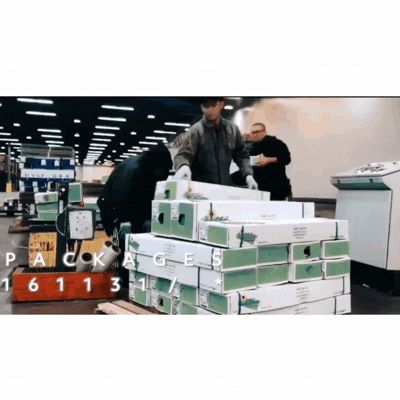by: Michael LoBue, CEO
It seems to happen around every flower holiday – flowers are weaponized by protectionists and they drag out the Andean Trade Preference Act (ATPA) as the reason domestic flower growers have been harmed over the past quarter century. While this narrative is comforting to some, it’s not the complete story. It’s not even the accurate story. I suppose it’s a comforting narrative because it places the blame beyond our shores.
I bought into this narrative when became CEO of the CalFlowers back in late 2013. As a native Californian, I was ready to carry the charge against the perpetrators of this seemingly obvious injustice. Trained as a policy wonk, I went to find the data that supported this narrative. That’s when I discovered that not only was the core thread of the narrative wrong, it was exactly 180 degrees wrong. While there’s no denying that inexpensive imports from the Andes coincided with a massive disruption of domestic flower production, especially in California, there’s actually a more supportable narrative that inexpensive imported flowers actually saved the US floral industry.
Consider the following facts that the protectionists conveniently fail to mention:
- The equator is a far superior location for growing the three most popular flowers of the US consumer: roses, carnations and mums;
- Colombia and Ecuador can grow these flowers, and others, in the quantities desired by US consumers 52 weeks a year – it’s not possible to do that in California – if it were possible, then why haven’t Californian flower farmers met the US consumer demand?
- Between 1981 and 1991 – a full decade before the ATPA was signed, California lost 37% of its commercial cut flower growers (from 478 growers in 1981 to down to 301 in 1991 per Floriculture Crops Reports from U.S. Department of Agriculture).
- 50% of California’s commercial flower farms started operations after 1993. 1993 was the first year imports accounted for more than 50% share of the US flower market (source: California Association of Flower Growers & Shippers, 2017 membership records). In the graph below the Early Era was from 1870’s to 1941; the Middle Era was from after WWII to 1993; the Current Era is from 1994 to the present:
- California commercial cut flower production grew 22% between 1993 and 2015 – not spectacular when compared to the 168% for imports, but the 22% growth of the California farms is enjoyed by a third fewer farms in 2015 than there were in 1993.


What are some of the reasons, completely unrelated to imports, which might account for the challenges that faced California commercial flower growers? After an analysis of several possible cofactors, only two rose to the surface:
- California population growth – since the census was first taken in 1860 until the most recent decennial census of 2010, California’s population has grown by double-digit percentage points every single decade. One in 8 Americans reside in California today!
- This phenomenon, alone, put tremendous pressure on land use in the State to the point where almost any other land use is more valuable than growing commercial flowers.
- Family businesses: Shirtsleeves to Shirtsleeves – this multicultural proverb predicts that within 3 generations of a family business the special qualities that existed in the founder are no longer by the 3rd generation.
While this proverb may have been truer in the past, it describes a general condition of today’s flower farms. Most flower farms are family-owned and about half in California are multi-generational, as were the vast majority of now defunct California farms. First of all, success in business in the latter part of the 20th century was very different proposition from success in business at any previous time in the State’s history. The land use issues aside, for a state that grew so fast, California has always had water issues and farm labor became more complicated in the second half of the 20th century. Both water and labor issues remain significant challenges for the California flower farmer.
As for 3rd and 4th generations of a family business, these offspring have many more options for careers and futures than being a flower farmer. Not that there’s anything wrong with being a flower farmer; there’s actually a good deal right about it. But for contemporary generations it’s one of many options that their forbearers didn’t have.
Above are a handful of factors that domestic flower protectionists never bother to mention. Maybe they don’t mention them because they aren’t as simple or as emotionally appealing as casting blame elsewhere.
Understanding these issues correctly by incorporating all the important and relevant facts is critical to maintaining a healthy domestic flower industry. There is a place for domestic production of cut flowers, and as 50% of today’s California cut flower farms know, there’s good business for domestic growers with imports helping to drive U.S. flower consumption.
As an industry, the human and capital resources are too scarce to be trying to solve problems that don’t exist or pursuing challenges that are more emotional than real.
This post is intended to end the wrong and destructive narrative that weaponizes flowers for the political purpose of blaming imports for the state of the domestic industry – there’s a new narrative in town! By the way, the floral industry is doing fine. It has its challenges as does any industry reacting to innovations and changes, but it’s fine!
And, the next time you think the California flower farmer needs to be bailed out to save farm jobs, consider how many of the more than 83,000 Americans currently employed in the domestic floral industry would loose their jobs because flower prices have increased to subsidize a small number of farm jobs? Doesn’t matter what it’s called, a tariff by any name on imported flowers will increase retail prices, shrink the market and a good portion of the 83,000 Americans working in floral today will have to find other work.





































Leave a Comment